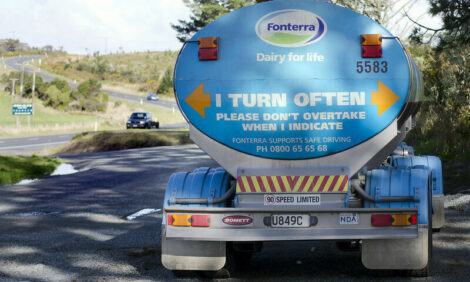



Cutting Costs by Proper Post-drought Management
US - University of Missouri Extension livestock specialist Daniel Mallory said producers face many conditions beyond their control, but they can control costs by using effective management tools.Dr Mallory spoke to northeastern Missouri agriculture lenders during an ag lenders seminar 3 December at Fiddlestiks restaurant in Hannibal.
The MU Department of Agricultural and Applied Economics sponsors a statewide series of seminars in cooperation with regional MU Extension specialists.
Dr Mallory said agriculture producers have been hard hit by rising feed, fertilizer and fuel prices following the drought of 2012. But producers can counteract these increased costs by examining herd health, nutrition, genetics and marketing.
Feed testing is the most important thing a livestock producer can do to control costs, Mallory said. He recommended testing hay samples twice-once after baling and once before feeding-and using this information to provide herds with balanced proteins. Hay probes are available at local extension offices, he said.
How forage is stored partly determines nutrient value, he said. Hay stored outside can be compromised by as much as 30 per cent by weather and wildlife. Mallory said studies are being done on different types of bunk management systems to determine efficiency.
Knowing the nutrient value of the forage can help producers make sure they don't overfeed or underfeed livestock. Cost for fair-to-good mixed grass hay is $100-$145 per ton, depending upon the location. Silage is selling for $60 per ton and dry matter may be $200 per ton. Farmers can save production costs by calculating the cost and nutrient value of each type of feed.
Dr Mallory also recommended that producers body-condition score their cows and sort accordingly. Producers may want to consider their stocking rate as well. Those who ran out of pasture for grazing their herds may want to reduce their numbers. The rule of thumb for stock is one cow to 2.5 acres of pasture. Producers should always have a 30-day emergency supply of hay on hand, he added.
Some producers may want to consider weaning calves earlier this year. Purebred producers don't favor this method, but it does reduce nutritional needs of the cows, thereby reducing costs, he said. "It will save considerably on need for dry matter, and cows cycle earlier." This method also is labor intensive for the producer.
Creep feeding, the practice of supplying a supplemental feed to calves before they are weaned, helps to supplement milk from the mothers and extends the grazing season. This can reduce forage needs for the entire winter feeding season and when combined with early weaning can have great economic value, particularly in a year like 2012 when 98 per cent of Missouri pastures were stressed due to heat and drought.
A riskier practice is limiting feeding. Mallory said nutritionally balanced rations could be fed while extending hay supplies 25 to 50 per cent.
Producers also can manage dry-matter consumption by considering environmental factors such as shade, mud, crowding and the distance a cow has to walk to the feeding area. Longer distances from shade and water to the feeding area means the cow uses more energy and food supply in walking.
Dr Mallory recommends that livestock producers work with the Natural Resources Conservation Service and the USDA to have water supplies tested for nitrates. Dangerous concentrations of nitrates may have developed in cornstalks stressed by drought. The symptoms of nitrate presence in cows are the same as ones exhibited by heat stress. County extension offices also provide free nitrate testing.
One of the few positive things likely to be derived from the drought will be genetically superior cow herds in Missouri, Dr Mallory said. Producers will cull older and inferior cows from their herds. "It was a perfect year for managing your cow herd," he said.



